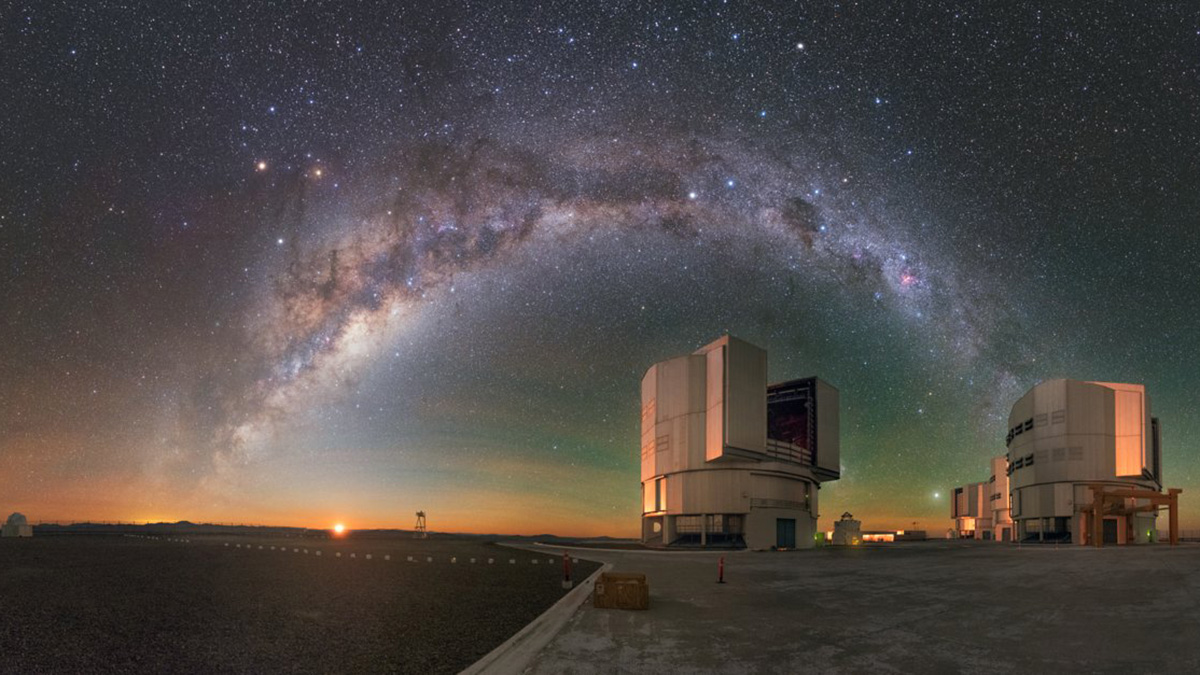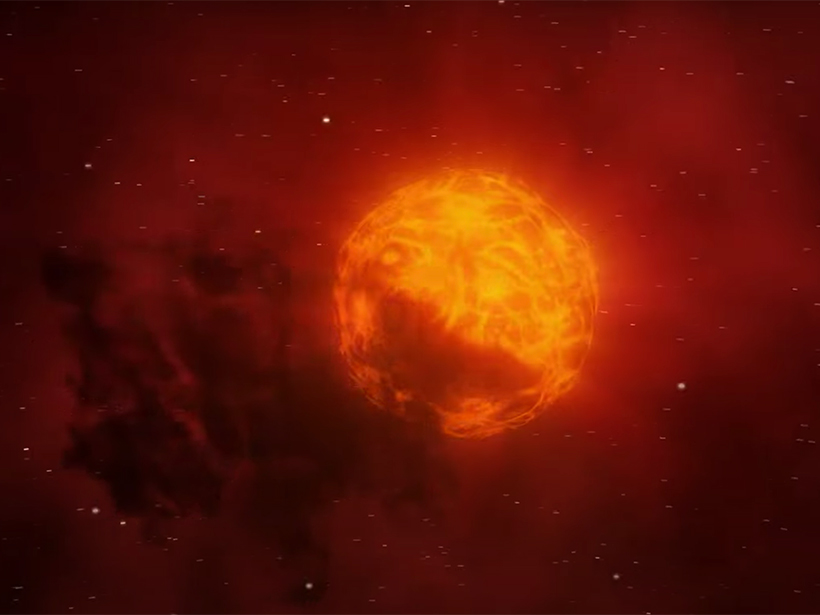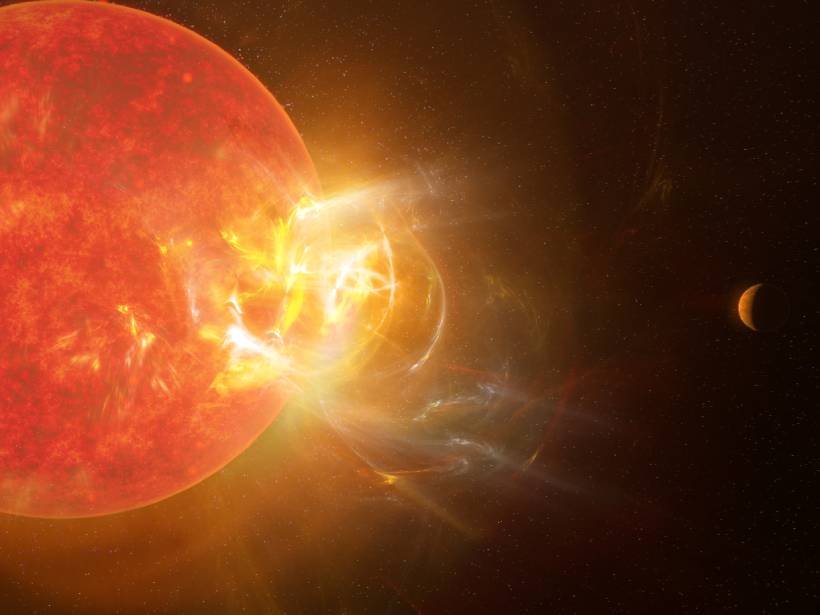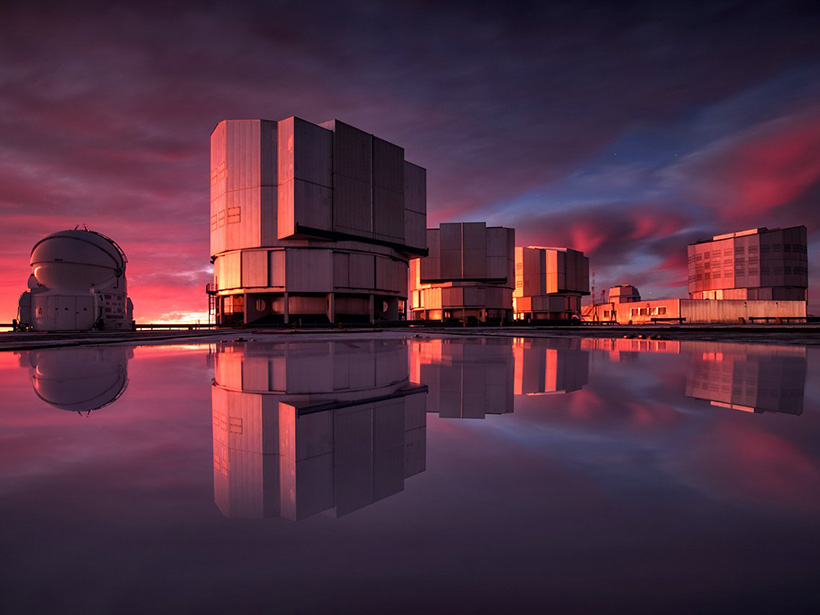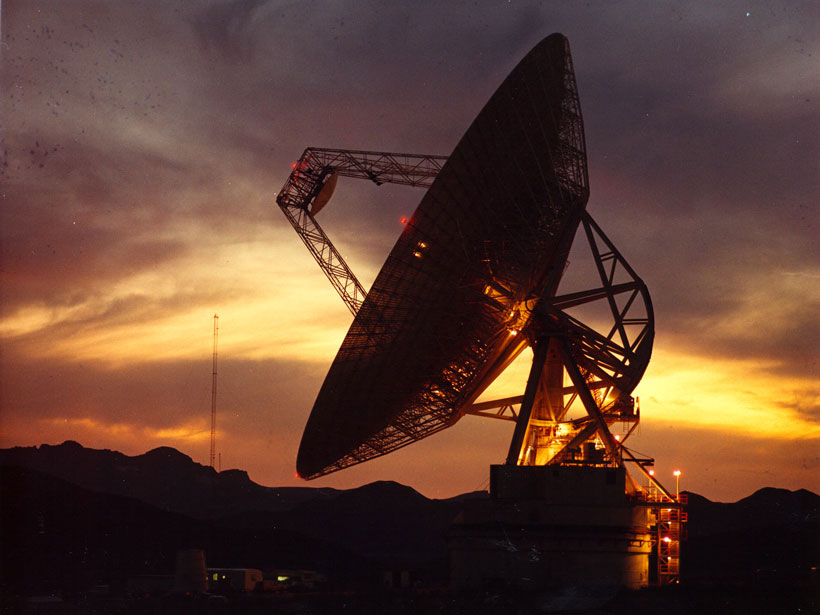A pandemic project analyzing a trove of infrared images revealed an unexplained phenomenon taking place in Neptune’s atmosphere.
telescopes
With MeerKAT, Astronomers Peer at the Possibilities of Radio Imaging
Stunning images of the center of the Milky Way showcase technology and techniques that may be a starting point for more discoveries.
Five Reasons Geoscience Should Care About Astronomy’s New Road Map
The latest road map to U.S. astronomy’s next decade recommends a smaller space telescope, ground-based facilities, and an institutional effort to create an inclusive and equitable field.
When Betelgeuse Won’t Explode, You Need a Big Telescope to Prove It
Thanks to last-minute telescope time, researchers pieced together the sequence of events that caused Betelgeuse’s Great Dimming last year.
Record-Setting Flare Spotted on the Nearest Star to the Sun
Proxima Centauri recently let loose a blast of radiation, and ground- and space-based telescopes detected the record-setting event at wavelengths ranging from radio to the ultraviolet.
Making the Universe Blurrier
Climate change appears to be directly and indirectly affecting the view from at least one observatory while threatening the existence of others.
Exoplanet Earth: An Ultimate Selfie to Find Habitable Worlds
Aliens spying on us from afar is a common science fiction trope. Soon we might know what E.T. would see through a telescope. And that information could help identify other Earth-like planets.
New Space Telescope Named for Nancy Roman, Astronomy Pioneer
Nancy Grace Roman’s namesake telescope will search for distant worlds and the earliest galaxies.
Earth’s Skies Transmitted Signs of Life During Lunar Eclipse
Using upcoming ground- and space-based telescopes, scientists hope to make similar observations of the skies of distant, Earth-like exoplanets.
More Than Just Astronomy: Radio Telescopes for Geophysics
Linking an existing network of radio telescopes with satellite radar would make it possible to measure ground displacements in a globally consistent way, scientists propose.



